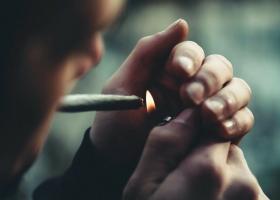What are legal drugs and what types are there?
In the psyche of most Spanish-speaking people, the term drug is associated with an illegal substance: when When we hear about drugs, probably the first names that come to mind are cocaine, heroin, ecstasy or LSD.
However, there are a large number of substances that fall into this type of classification and not all are illegal (although this does not mean that they are innocuous, their use or abuse may generate serious consequences). What are legal drugs and what types are there? In this article we are going to discuss it.
- Related article: "Types of drugs: know their characteristics and effects"
Legal drug: basic concept
The concept of a legal drug is easy to understand, but in order to do so, it is first necessary to remember what a drug is.
We call drug any substance, whether of natural or synthetic origin, with the capacity to generate an alteration or modification in the nervous system. It is therefore any substance that has a psychoactive effect. This definition does not include the legal consideration that the substance has, although in a colloquial way we usually identify drugs with illegality.
Thus, those substances with psychoactive effects that are allowed are called legal drugs, their use not being punishable by law despite knowing their possible effects. This legal status can refer to its use at a recreational level or to be intended for others uses, which do not include its consumption to alter the psyche, and for which it is considered something permitted.
Of course, as we indicated in the introduction that they are legal does not mean that they do not pose a danger, being the misuse and / or abuse of them very dangerous and harmful to health and being able to generate serious illnesses or even cause death.
- You may be interested in: "15 consequences of drug use (in your mind and in your body)"
Types of legal drugs
There are many legal drugs that exist, and that can receive different uses by the population. Some use them as a recreational element, while in other cases consumers intend to benefit from effects relaxing or exciting of the substance in question or use them in order to forget or reduce some type of physical pain or emotional. Among the so-called legal drugs, some of the best known are the following.
1. Alcohol
Probably the most used and socially accepted drug to the point of being part of a wide variety of cultures. Alcohol or ethanol is a depressant-like substance, which decreases the activation of the nervous system and is consumed by all kinds of people, generally from adolescence.
Initially it has a euphoric and relaxing effect, as well as some disinhibition in some people, but later the general tone decreases and symptoms appear such as blurred vision, hypotonia and muscle weakness or problems focusing attention or inhibiting emotional behaviors extreme. Excessive and abusive consumption can lead to hypoglycemia, dizziness, vomiting, coma or even death.
It can also generate dependency very easily (especially due to its social acceptance), as well as potentially fatal withdrawal syndromes. It is common for alcoholics to develop cirrhosis, kidney and liver problems, and even cognitive and functional deterioration in complications such as those produced by Korsakoff syndrome after the Wernicke's encephalopathy.
2. Nicotine
Tobacco is another of the most widely consumed drugs worldwide and, although the legislation of many countries prohibits smoking in certain spaces, the very fact of smoking or selling nicotine products (especially tobacco) is not forbidden. It is a substance that may seem relaxing to experienced smokers, but it's actually a psychostimulant whose main mechanism of action is on acetylcholine.
If long-term smokers find it relaxing, it is because long-term consumption ends up blocking said neurotransmitter. It generates a large number of problems, the pulmonary (lung cancer and COPD stand out) and cardiorespiratory problems being especially relevant.
We are dealing with a substance that generates dependency (in fact, it is the main responsible for tobacco generating physical dependence) and withdrawal syndrome, as people who have tried to quit smoking probably know.
3. The xanthine group: caffeine, theobromine, theophylline
Although few people consider them as drugs, the truth is that they are substances that generate an alteration in brain chemistry that has effects on behavior so that they can be considered as such. These are substances with a stimulating effect, generally generating an increase in brain activation. Of course, its effects are much less than those of other substances, requiring large quantities to become dangerous.
Caffeine is probably the best known as such, its consumption being through coffee the most frequent. Although the existence of dependency is not usually considered as such, it is observed that for some people it is a addictive substance and to which the body generates tolerance, being able to cause a certain syndrome of abstinence. Poisoning is difficult to achieve, but it is possible with massive consumption (after six cups of coffee it becomes dangerous).
In addition to coffee, it must be taken into account that can be found in a lot of soft drinks that although perhaps to a lesser extent also generate a high.
As for theobromine and theophylline, possibly few people know what we are referring to. However, these are components that are present in tea and chocolate and that generate an increase in cortical activation and energy levels.
4. Volatile substances
We are dealing with substances that are legal because their original use is not linked to the consumption or administration of the substance as such in the body. The name of volatiles is due to the fact that the route of administration is usually inhaled or aspirated. These are substances such as glue, gasoline, anesthetics or ketones, which some people use in order to notice psychoactive effects, generally of a depressant type.
They are substances with low addictive potential, but prone to abuse that can cause serious damage, among other things, to the liver, spine, muscles, and nervous system. It also facilitates the appearance of aggressive behaviors.
5. Psychoactive drugs and other drugs
Psychoactive drugs, and actually all kinds of drugs, is a substance that can be considered a legal drug (not in vain drugs in English refer both to the concept of drug as a drug) by generating an alteration in the patient's nervous system (in the case of other drugs not related to psychiatry, they alter the chemistry of other parts of the organism). In principle the use of these drugs is medicinal, which is why they are legal. However, many become dependent and even in some cases are used well to try to enhance their own abilities or recreationally.
Probably the most frequently used psychotropic drug in this sense are benzodiazepines, which are mainly used to treat anxiety. In its medical use, in principle, the doses used and the times used are monitored to a great extent, although many medical professionals overprescribe them and for longer than they should initially be employees. Other anxiolytics have also been abused due to their high addictive potential, such as no longer frequent barbiturates (which caused many overdose deaths, such as Marilyn Monroe).
In addition to this, substances such as amphetamines or derivatives of them, such as modafinil or adderall, are also used, which although their function and indication are problems such as ADHD or narcolepsy Sometimes they are used recreationally or even by students due to their stimulating properties and the supposed enhancement of the ability to concentrate and stay active. Also in this case they can cause serious health problems (including liver and coronary problems) and be highly addictive, being dangerous if used without medical supervision.
Among other drugs that are not used as psychoactive drugs but that do generate addiction and dependency and are considered legal drugs are drugs such as steroids, morphine or codeine, or anesthetics like phencyclidine. Steroids are also another substance that can be considered a legal drug; they are often abused in fields such as sports And this can have serious repercussions on health. As for morphine, it is a derivative of opium that is used for the treatment of pain.
Codeine is a derivative of it, present in multiple syrups and medicines. Both are opioids with depressant and relaxing effects and can cause addiction and withdrawal, as well as poisoning. Finally, phencyclidine is currently an anesthetic for veterinary use and has psychodysleptic effects that can generate perceptual alterations, loss of sensitivity, aggressive behavior and even hallucinations.
All these drugs are legal in certain areas, and some of them can be easily obtained (for example, anxiolytics) while others are only legal in very specific areas.
Differences between countries: the case of cannabis
So far we have talked about substances allowed in most of the globe, be it recreationally or for other purposes. However, it must be borne in mind that the law is not the same in all parts of the world. Which drugs are considered legal or not will depend on the legislation of each country. One of the cases in which we see this variability the most is in cannabis, whose legal consideration varies greatly in different countries of the world.
The best known case is that of the Netherlands, which allows the purchase and consumption of cannabis in coffee-shops. Also in Washington and Colorado, in the United States, or in Uruguay its recreational use is allowed (although with restrictions). In other countries, including ours, own consumption is decriminalized as long as it is done in private places. Consumption in public, however, if prohibited and illegal. So is cultivation, and obviously the same is true of its sale and distribution.
Likewise, other substances have changed their legal status in certain countries. In the United States, for example, the sale of alcohol was illegal during the so-called Dry Law. Alcohol is also prohibited in some Muslim countries, for religious reasons, although in other countries the law does allow it.
Fake legal drugs: “legal highs”
Special mention deserves a type of substance for recreational use that, although sold as legal, actually What they do is take advantage of the legal vacuum generated by the little knowledge about them or because they are so recent that It has not yet given time for them to be banned.
These are drugs that are called to be regulated, and in many cases prohibited, and take advantage of the slowness of the administrations in order to establish laws or regulations in this regard to impersonate legal. In reality, they would be in a situation of legality: the legislation still does not contemplate them. This is thus due to a kind of escalation or competition: as specific drugs are prohibited and persecuted, others are created that take advantage of legal loopholes.
In addition, they take advantage of this legality to sell more: they claim to be legal, which makes the consumer believe that the danger is minimal. However, in many cases their psychoactive effects are not known and many of them have devastating effects on those who consume them. For example, the well-known cannibal drug or krokodil were illegal at the time, created as an attempt to replace the already persecuted heroin.
Bibliographic references:
- Gahlinger, P.M. (2001). Illegal Drugs: A Complete Guide to Their History, Chemistry, Use and Abuse. Sagebrush Press (UT).
- Fox, Thomas Peter; Oliver, Govind; Ellis, Sophie Marie (2013). "The Destructive Capacity of Drug Abuse: An Overview Exploring the Harmful Potential of Drug Abuse Both to the Individual and to Society". ISRN Addiction. 2013:pp. 1 - 6.
- Teale P, Scarth J, Hudson S (2012). "Impact of the emergence of designer drugs upon sports doping testing". Bioanalysis. 4 (1): p. 71 - 88.



